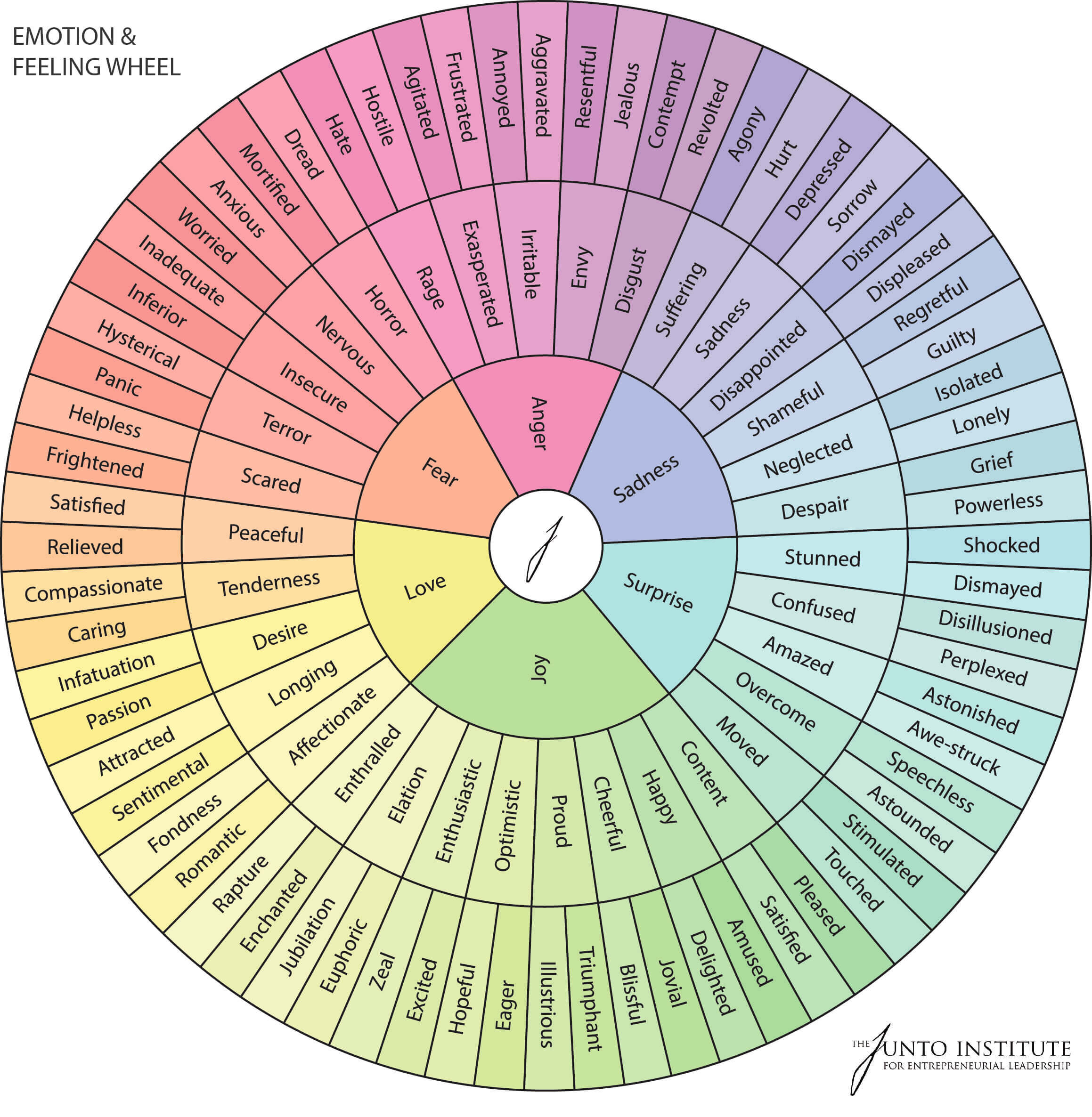The Language of Emotions
Let’s start with a game.
Take a minute to list all of the emotions you can think of. Emotions you may have on a daily, weekly, monthly, or even yearly basis. Write them down; I’ll wait here for a moment.
…
How many emotions did you list? 3? 5? 10?
Studies show that the average person can name just a handful of emotions. But this is such a tiny fraction of the range of emotions we actually experience as humans! Most of us experience a huge range of emotions each day, but tend to lump our beautiful diversity of feelings into just a couple of catch-all categories - primarily happy, sad, and angry.
By ignoring the true diversity of our emotions, we’re robbing ourselves of the full experience and complexity of human life.
Check out this emotions wheel diagram - look how diverse the range of emotions & feelings is!
Learning a New Language
Why do so many of us have such a hard time understanding and communicating our emotions?
Well, most of us have never been taught the language of emotions.
As children, most of us learned to name colors and animals and shapes and letters, so we became proficient in understanding these categories. But if we were never taught the language of emotions, how could we expect to adequately express them as children or as adults?
One way babies communicate is by crying. This is their language. They don’t yet have words, so they express their needs in the only way they are able to.
As adults, we assume everyone around us has the language to express their needs and feelings clearly, but many of us do not. When we don’t have the language to communicate our needs clearly, often we end up acting out in ways that can be detrimental to ourselves and our relationships with those we care about. Many times we then feel shame or embarrassment about our inability to get our needs met in a more mature way.
What might this look like in practice?
Maybe deep down, you feel lonely and unappreciated, but on the surface, these feelings show up as sadness. Rather than recognizing you’re lonely and seeking support from friends or loved ones, you may feel sad or depressed and end up withdrawing from those around you - further distancing yourself from what you really need, which is love and connection.
Maybe deep down, you feel inadequate or helpless, but on the surface, these feelings show up as fear or anger. Rather than recognizing you’re feeling inadequate and seeking support from people you trust, you may lash out in anger and receive hurt or anger in return from those around you - further reinforcing the idea that you aren’t good enough.
Where to Start
The good news is that, no matter how old we are, we all have the capacity to learn about our emotions and develop a more accurate language for expressing them.
The first step can be as simple as taking a look at the feelings wheel I included above and becoming familiar with the diversity of emotions. Start becoming acquainted with the language of feelings and emotions.
Next, start to become curious about what you’re feeling. Approaching our feelings and emotions with curiosity helps us to respond to ourselves (and others) with compassion rather than getting stuck in shame and blame.
Humans are complex and diverse, and our emotional states are complex and diverse as well. Becoming better acquainted with our emotions and feelings will help us to more accurately identify what our needs are in any given moment, which will help us to seek out what we are really needing in that moment rather than seeking out a band aid solution that will keep us feeling stuck in the same old patterns.
About The Author
Stephanie is a graduate student in Clinical Psychology at Antioch University in Los Angeles and is on the path to pursuing licensure as a Marriage and Family Therapist. She is passionate about working in the perinatal space and creating an empowering, nurturing environment to help women thrive. She currently serves as the Client Care Specialist at the Center for Integrative Change.



